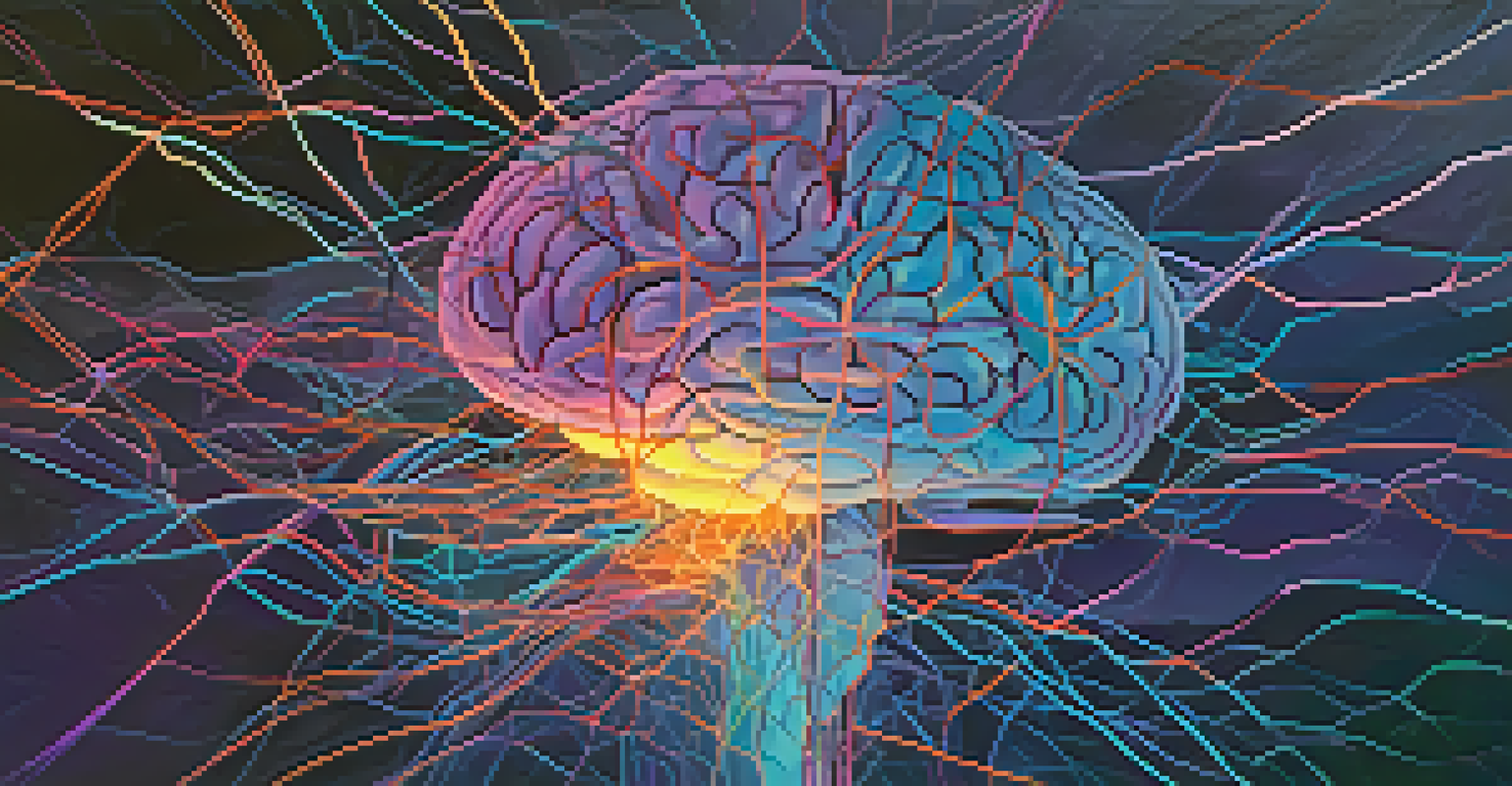Exploring Hallucinogens and Their Impact on the DMN

What Are Hallucinogens and Their Types?
Hallucinogens are substances that alter perception, mood, and cognitive processes. They can be natural, like psilocybin found in magic mushrooms, or synthetic, such as LSD. These substances can lead to experiences that range from profound insights to unsettling trips, making them both fascinating and complex.
The mind is everything. What you think you become.
The most common types of hallucinogens include psychedelics, dissociatives, and deliriants. Psychedelics, like LSD and psilocybin, primarily affect serotonin receptors in the brain. Dissociatives, such as ketamine, create feelings of detachment, while deliriants, like certain anticholinergics, can cause confusion and altered reality.
Despite their varied effects, all hallucinogens share a common thread: the ability to alter one’s consciousness. This alteration opens doors to new perspectives, which is why they are often explored in therapeutic settings.
Understanding the Default Mode Network (DMN)
The Default Mode Network (DMN) is a network of brain regions active during rest and self-referential thought. It includes areas like the medial prefrontal cortex and the posterior cingulate cortex. Essentially, the DMN plays a crucial role in our internal dialogue, memory recall, and daydreaming.

When we're not focused on the outside world—like when we're lost in thought or reminiscing—the DMN lights up. This network is linked to our sense of self and personal narrative, making it central to how we understand our place in the world.
Hallucinogens Alter Consciousness
Hallucinogens can significantly change perception, mood, and cognitive processes, leading to profound experiences.
Research shows that the DMN can become hyperactive or dysregulated in certain mental health conditions, such as depression and anxiety. This dysregulation can lead to ruminative thoughts, impacting overall well-being.
How Hallucinogens Affect the DMN
Hallucinogens have a unique ability to alter the functioning of the DMN, often leading to a decrease in its activity. This reduction can result in a sense of ego dissolution, where the boundaries of self begin to blur. Users often report feeling interconnected with the universe, leading to profound spiritual experiences.
What we think, we become; what we feel, we attract; what we imagine, we create.
For instance, studies using fMRI scans show that while under the influence of psilocybin, the DMN's connectivity decreases. This can create a state of heightened awareness and emotional release, as the individual may feel less constrained by their personal identity.
This shift in DMN activity is particularly interesting for researchers exploring treatments for mental health disorders. By disrupting the typical patterns of the DMN, hallucinogens may offer new pathways for therapeutic interventions.
Therapeutic Potential of Hallucinogens
The therapeutic potential of hallucinogens is gaining traction in mental health research. Studies indicate that substances like psilocybin and MDMA can help alleviate symptoms of PTSD, depression, and anxiety. This is largely due to their ability to foster new perspectives and emotional breakthroughs.
Therapists often incorporate these substances in controlled settings, allowing patients to confront difficult emotions and traumas. The altered state of consciousness can enable individuals to process experiences that may otherwise be too painful to access.
DMN's Role in Mental Health
The Default Mode Network is crucial for self-referential thought, and its dysregulation is linked to mental health issues.
As research progresses, the conversation around the decriminalization and medical use of hallucinogens is evolving. This could pave the way for more widespread acceptance and integration into therapeutic practices.
Risks and Considerations of Hallucinogen Use
While hallucinogens can offer benefits, they also come with risks that should not be overlooked. Adverse effects can include anxiety, paranoia, and even hallucinations that lead to dangerous behavior. It’s crucial for individuals to approach these substances with caution.
Additionally, not everyone is a suitable candidate for hallucinogen therapy. Those with a history of certain mental health conditions, particularly psychosis, may experience exacerbated symptoms. Therefore, thorough screening and professional guidance are essential.
Understanding the balance between potential benefits and risks is vital. Education and responsible use are key components in ensuring that these powerful substances are used safely and effectively.
The Role of Set and Setting in Hallucinogen Experiences
The concept of 'set and setting' is fundamental in shaping the hallucinogenic experience. 'Set' refers to the mindset of the individual, while 'setting' is the physical and social environment. Together, they can significantly influence outcomes and experiences.
For example, a positive mindset and a comfortable environment can lead to enlightening and therapeutic experiences. Conversely, a chaotic setting or a troubled state of mind can result in distressing trips. This underscores the importance of preparation and intention.
Therapeutic Potential of Substances
Research shows that hallucinogens like psilocybin may help treat conditions such as PTSD, depression, and anxiety.
Creating a supportive atmosphere—whether through guided sessions or safe spaces—can enhance the therapeutic potential of hallucinogens. This approach emphasizes the necessity of mindfulness and awareness in the use of these substances.
Future Directions in Hallucinogen Research
As interest in hallucinogens continues to grow, research is expanding into various areas, including neurobiology and psychology. Scientists are keen to understand the mechanisms behind their effects on the brain, particularly regarding the DMN. This could unlock new treatment protocols for various mental health conditions.
Moreover, clinical trials are increasingly exploring different combinations and dosages to maximize therapeutic benefits while minimizing risks. The aim is to establish standardized practices that can be safely implemented in therapeutic settings.

The future of hallucinogen research is promising, with potential breakthroughs that could reshape our understanding of consciousness, mental health, and the human experience. These explorations could ultimately lead to innovative treatments that foster healing and growth.